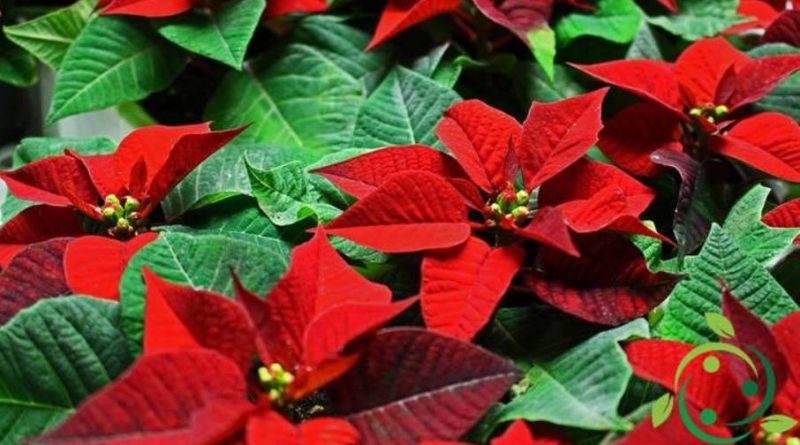How to grow a Poinsettia
How to grow a Poinsettia
The Poinsettia or Christmas Star (Euphorbia pulcherrima Willd., 1834) is an ornamental plant belonging to the Euphorbiacea Family, originating from Mexico where, in the wild, it can reach a height between two and four meters. The name “Poinsettia” comes from Joel Roberts Poinsett, the first US Ambassador to Mexico, who introduced the plant to the United States in 1825.
In the poinsettia the red leaves are not flower petals but modified leaves; these have lost the chlorophyll and taken on colored pigments. However, there are Christmas Stars in which these leaves can have colors: yellow, white or pink. The real flowers are small and yellow and are found in the center of the bracts.
In this card we will see how to cultivate the Christmas star by following all the tricks to keep this plant longer in an optimal vegetative state. We immediately remember that in the areas of Italy where the winter is milder the Christmas star can also be cultivated in the garden, in the other areas the only possibility of cultivation is in pot in a protected environment.
For the cultivation of the Christmas star you have to choose a dry environment, away from direct light (even at night and Christmas lights) with an optimal period of light of 14-15 hours of darkness and 9-10 hours of light (ideal from 7: 00 to 16:00), from radiators, from the fireplace and from other heat sources; moreover it is advisable not to place it near windows or openings from which drafts of cold air could enter, as this plant suffers greatly from sudden changes in temperature, excessive heat and cold.
It should also be remembered that the latex that sometimes comes out of leaves and stem is stinging and could even cause erythema; furthermore, if it is ingested, it is advisable to call your doctor as ingestion can cause nausea, vomiting, diarrhea or even loss of consciousness.
For this reason it is advisable not to touch it without gloves and possibly to wash your hands.
Let’s look at the characteristics of the growing medium. This must be of a light type, mixed with 20% of silica sand, subjecting the base of the vessel to very large gravel or perlite to increase drainage.
The ideal cultivation temperature of the Christmas star is between 14 and 22 ° C; while with regard to water supplies, it is advisable, in winter, to water it at least once a week, while in summer it can be up to 2-3 times.
However, it is necessary to adjust to intervene when the soil is completely dry because otherwise, if water stagnation is created, the plant risks dying.
For the fertilizing technique it is good to intervene with small doses at least once a month. The main inputs of elements must be based on Potassium, Phosphorus and Magnesium; we can also provide a fertilizer with moist acids, in the case of wanting to increase the vigor of the roots (especially useful immediately after repotting) and of the whole plant.
For the real cultivation technique, since the poinsettia is a brevidiurna plant and therefore, for flowering, it needs a reduced number of light, this plant must be kept in the dark for many hours. If this is not possible, protect it from light with blankets or very dark fabric, or black.
Let’s see the technique of pruning and governing the Christmas star. It is necessary to cut the leaves and the sick or dry twigs to favor the growth of new healthy plant parts. In this sense, as mentioned, a small fertilization of Potassium, Magnesium or humic acids can be of great help.
Finally, with regard to plant diseases and / or cryptogamic diseases, in general the Christmas star has no particular diseases to which we must be careful, except the precautions to be taken to avoid water stagnation, excess brightness or temperature conditions outside the its optimal standard. Furthermore, in the repottings it is necessary to remember that the roots of this plant are very delicate and must be handled with extreme care.
In its management between one year and another, especially at the end of the Christmas holidays, the plant begins to spoil, to lose the red leaves and to dissect itself. Some people, who do not know the biology of this plant, mistakenly throw it away without knowing that this is the normal life cycle of the plant. At this point it is essential to do a pruning to remove all the dry and damaged parts. Pruning should be repeated at least once a month until the end of summer, depending on the need. Once spring is over and there is no risk of late frosts, it is possible to put our Christmas Star on a balcony, in a shady place so that it does not receive direct light. Furthermore, it is advisable, in late April, to carry out repotting followed by good fertilization.

